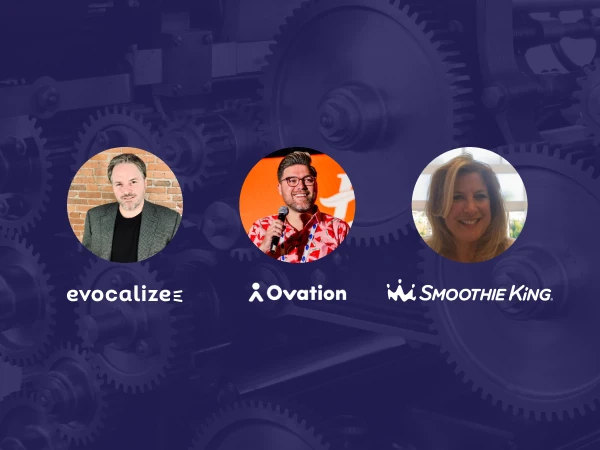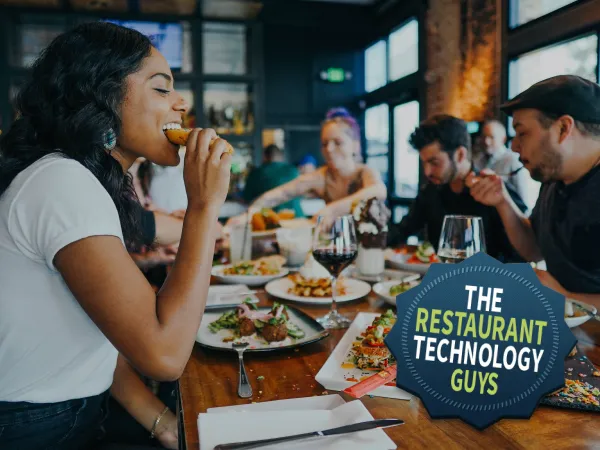New FCC rules & the future of lead generation
Are you ready for the next era of lead generation? The new FCC rules changes announced in December 2023 are set to revolutionize how leads are purchased, impacting businesses across the board.
Tune in with Evocalize CEO Matthew Marx and rebel iQ CEO Andrew Pawlak as they unravel the FCC’s latest rules and strategies to implement now to be successful.
Dive into how these rules are shaking up lead gen strategies, learn why a seamless integration of marketing automation, lead capture, and CRM is crucial, and get a sneak peek at the future of the industry. It’s all about staying ahead, and this webinar is your key to doing just that. Let’s navigate these changes together and keep your lead generation game strong!
Key takeaways
Here are the key takeaways from this webinar around the new FCC rules:
- Introduction of the new FCC rules targeting the ‘lead generator loophole’, increasing requirements for consent in lead generation for automated texts and calls.
- The shift towards a one-to-one consent model, requiring clearer and more explicit consumer consent.
- Challenges faced by businesses in adapting to new lead generation flows under the new FCC rules.
- Potential increase in lead costs and improvement in lead quality due to reduced competition and more targeted consent.
- The crucial role of integrating marketing automation, lead capture systems, and CRM platforms for effective lead management.
Resources
- Connect with Matthew Marx and Andrew Pawlak on LinkedIn.
- Check out Matthew’s ChatGPT FCC TCPA Advisor (need access to ChatGPT 4).
- View the original video on LinkedIn for questions and comments during the live session.
- Learn more about the new FCC rules and lead generation changes for real estate and mortgage on the HousingWire Daily podcast.

Transcript
Justin Ulrich: What’s up, everyone. Thanks for joining our webinar today on the new FCC rules and the future of lead generation. I’m your host, Justin Ulrich, VP of marketing over to Evocalize, where we automate local marketing based on local data. With us today are the Evocalize, Matt Marxs and the CEO of rebel iQ, Andrew Pawlak.
They’re going to take us through this topic today and, and help us to make some sense of these upcoming changes. But real quick, before I hand it off to them for intros. I just wanted to preface that as you heard in our titles, none of them are “lawyer”. So this call is really just meant to give you food for thought and, and things to look into for, for your own for your own sake there.
So also feel free to ask any questions that you have in the comments. there on LinkedIn. So try to get to as many of them as possible at the end, but you know, there’s going to be a lot of them, I’m sure. And if we don’t have time to get to them all afterwards, those questions do live on the event page.
So we will go back and try to answer as many of them as possible. And then at the end of the call, we’ll also be sharing a link to this really cool FCC / TCPA advisor bot that Matt created on chat GBT. So I like to call it MattGBT, but it doesn’t quite get to what it does. But anyway, make sure you hang around for the link to that.
And I guess with that, we’ll go ahead and kick things off over to, to Matt and Andrew for some intro. So I guess Matt, we’ll start with you.
Matthew Marx: Sounds good. Thanks, Justin. Yeah. Playing with tech. So so I appreciate the appreciate the legal disclaimers and and and we’ll talk a little bit more about the bot as we get in into this conversation.
But I’m Matthew Marxs. I’m a founder and CEO of Evocalize. In terms of background, I have about 25 years of digital marketing and technology expertise. I’ve been served as a member of the interactive advertising bureau based in New York and basically revolved around the local marketing word of mouth marketing lead generation space for most of, most of my career.
And you know, really excited to dig into this topic. I, that You know, I think it kind of flew under the radar with some of the other news going on in, in these industries. So excited to, to get to it. Andrew. Awesome.
Andrew Pawlak: Andrew Pollock, CEO, co founder at rebel iQ 20 years in digital marketing really focused most of my thought effort passion around conversion and how to convert your own first party leads.
So this topic excites me. I’ve been kind of. Thinking of this kind of change would happen in the space for quite a while. And, and I think there’s just a lot of opportunity that it creates for businesses to, to leverage their own first party leads and strategies around that. So excited to kind of dig in and discuss what this means and, and what businesses can do to prepare and how it’s, how it’s going to affect them for better or worse.
Justin Ulrich: Yeah, for sure. It’s definitely something like Matt said, it kind of flew under the radar. You know, there was obviously, you know, some, some murmurings that this thing was coming, but amidst everything else, it’s kind of just snuck up on us. So I guess, Matt, if you want, we could start things off and maybe just talking through what some high level explainer around the, the TCPA and, and the rules that may be there.
Matthew Marx: Sure thing. So if you’re not familiar with the TCPA at all it was a law passed it was based on a prior law actually that goes back gosh, 80, 80 some years. And the TCPA in its kind of more modern form was passed way back in 1991 when we were still tethered to our landlines at home.
And it was in, you know, It tended originally to address spam calls and automated phone calls and faxes. If you can remember what an old school fax looks like in those days. And so a lot’s changed since then, and it’s been amended over the years to get more modern over time. But what we’re talking about now is some amendments that were proposed, been in the works for some time and the kind of final order was proposed in November.
Right around the Thanksgiving time frame on its final form and then adopted on December 13th of last year, and it does a number of things. These these this order that was formulated from a working group trying to address Spam, right? And so probably like, you know, like, like everyone else that’s listening here today I get, I get spammed you know, a lot via text and email and phone and so as a consumer you know, I think we’ve all experienced the, you know, the, the kind of the spam effect.
And so what the working group was trying to do at the FCC was to address some of the, some more of the causes for spam than than, than, than it had been addressed prior. And one of, among other things that they did in this in this order, and the one that we focus on most is they’ve.
Closed what they call the lead generator loophole, or they’ve attempted to close the lead generator loophole, and we can get into the details of that and what they mean by lead generator or lead aggregators. But, but basically they’ve increased the requirements for consent to generate a lead for specifically Robo tax.
And Robo calls that would address the end consumer and we can get into that. I don’t want to monologue too long, but we can get into what we mean by lead generators, how they work today and what these changes are likely to bring.
Andrew Pawlak: Yep. So very good. So describe Matt, if you could, you know, that, that experience for the consumer that in its, in its current form and what they’re trying to address, right?
What, when you’re on, let’s just say a shopping comparison site. You’ve gone through a process of providing information. At the end of that process, you’re typically, you’re agreeing, you’re giving consent to something, right? And that specific area is something that is in question and we got to look at because the way that’s being done currently is, is something that’s gonna, is gonna change quite a bit.
And that has cascading effects in a variety of ways for anybody and everybody, the lead buyers, the lead sellers, the consumers, right? So talk to me a little bit about
Matthew Marx: that. Yeah, no doubt, Andrew. Good overview. We so if we think about the context of how lead aggregators or lead centralized lead generators work today, right?
They do a tremendous amount of marketing. They bring folks to things like a comparison shopping website. There are versions of this in every. Every industry that touches on leads and more. So you do, they do, they spend a lot of money on marketing. They get people to their site. They convert them in to, to get them to fill out a form with some kind of subject in mind, say comparative mortgage rates or real estate agent services or travel services.
Again, it spans lots of industries and the consumer then fills out that form. And then the lead aggregator takes that information and they monetize it by selling it to one or many downstream parties who want to buy the ability to contact that consumer that’s potentially in market or has intent for that service.
The thing that happens here, right, this is a becoming highly Profitable business model over the years. One of the most profitable we’ve ever seen as a, as a business model. Right. And, and that’s for, for one main reason, right? You can market, capture a customer’s information one time, and then sell that lead or that contact information to lots of different folks in, in the FCC materials, the working group talks about hundreds or.
You know, thousands of times, I think maybe more poignantly, it’s, you know, dozens of times in some cases, but but the lead is being resold in the lead is. Sometimes resold to to, to parties who are not directly related to the request itself as the consumer might expect it. It’s not as contextual as the consumer might expect it to be.
And so, when a consumer is looking for comparative mortgage rates, they might want to hear from a mortgage lender or two, but they may not expect that lead to go to a home improvement store or other, or an insurance. Provider or other folks who then will race to contact them. And so that’s, I think what, you know, when you read the opinions of the commissioners on, on the FCC’s report, you really get to the heart of what they’re trying to do, I think, which is.
Make life easier for the consumer by, by getting what they expect out of the lead that, that, that they’re asking for.
Andrew Pawlak: Yeah. What do they say about the road to hell? But, but there’s, there’s, there’s there’s a lot of positive things I think that that can happen here. Right. And, and I think that consumer experiences as tainted in many ways, you know, what people expect when shopping for almost anything online that are now they’re scared that like, you know, I fill out a form and I’ve got like loan officers showing up to my house.
So, so You know, to try to protect the consumer, they’re, they’re saying, Hey, that fine print that right now you got a real small and it says that when you submit the form, you’re saying that we can. Connect you to our entire network of say, trusted and mortgage professionals. So that means now, you know, you’re, you’re getting your information sold to every single one of these people.
That’s willing to, to, to buy you as a lead and our, you know, trusted network of home services professionals, because now we got solar, we got insurance, we got all kinds of good stuff we can sell you, right? So one inquiry turns into potentially 20, 30, 50 leads now that are being sold. And I think we can all, and then you put them into a robo dialer of every single one of those.
businesses and I mean, yeah, disconnect your phone and move out of the country to escape it. Right? So now everybody’s scared to put in information online and they should be. It hurts the first party lead generation of efforts of companies that don’t operate that way. And you know, it’s, it’s, it’s moving into what we’re talking about.
I think in this, in this situation, the, the, the way to address it or fix it is a one to one consent. Right? So, When I submit and say yes to your terms, which, you know, we’ll talk about solutions and kind of how to address these things, which probably need to be a bit larger than what you see in a lot of cases the font and the what exactly you’re consenting to and agreeing to needs to be crystal clear and well documented.
But you’re agreeing to this one party, right? And there’s talk about how are they going to predetermine or show that here’s the list of potential. Buyers or companies that we’re going to connect you with. And as a consumer, I would have to say, check a box. Let’s talk about like an experience. We can imagine, check the box next to each of those that I say yes to them and read their consent.
And this is what I’m agreeing. They can text me, call me them. So that lead that maybe would have been distributed to 20 different buyers is now the only way that’s going to happen is if the buyer consents 20 times.
So let’s talk about what, what, what does that do to lead supply and quantity and, you know, maybe quality potentially, and how many leads are, are going to agree that anything beyond maybe one or two probably brand names and recognized household names, the little guys, how are they going to compete when, you know, I see rocket potentially in Lone Depot and names, I recognize that a whole bunch of little ones that I’ve never seen me, but I don’t, you know, maybe stay away from them.
So, you know, it’s kind of what we’re going to need to see, and that’s going to impact a lot of different areas. Yeah,
Matthew Marx: and Andrew, that’s a really good point. I mean, the, the, the one main dissenter on the commission wrote an opinion and you should read it. We’ll give you a resource for that again at the end of this call.
But the reason for his dissent in his, in his write up on was, was because he was worried about the impact of small on small businesses of this ruling, right? Exactly. For your purpose, for what you mentioned, Andrew, like, yeah. If you’re going to, you’re going to give the names a lot of power potentially in this checklist that the FCC has suggested is an approved way to approach this versus the small folks who are relying on leads today.
And, you know, these things might dry up to some extent.
Andrew Pawlak: Yeah. And that, so I think there’s small folks on, on both the lead generator and seller side, who have to think of another way to monetize that, you know, when you think about mortgage leads and the cost to even generate that lead in the first place, I mean, we’re talking 10, 15, 20 clicks.
You got a 10 percent conversion rate on a good day. I mean, that one lead costs you 200 bucks to generate in the first place. And if your business is one where. You make your money off of now selling that lead five or 10 times over. Cause that’s the only way you can make money off of that experience.
Right? So the end buyers are going to struggle potentially. And then also some of these smaller shops that do this type of lead gen model are going to have to figure out another way to, to make money or they’re going to not, they’re not going to be able to compete with like a lending tree or one of these.
Big names that can probably do some interesting things with this and can build out the tech to support an interesting, probably consent process to automate and kind of do some things that some of the smaller shops are going to struggle with. So
Matthew Marx: they’re already, they’re, they’re trying to figure it out to Andrew, like, as, as I’m sure, you know, right?
We’ve, we’ve, we’ve spoken with top 10 mortgage, you know, C teams at top 10 mortgage lenders, lead aggregators in a number of industries, SMBs in the past few weeks after this is people are starting to wake up to the fact that this is coming and they’re all trying to figure out what it’s going to look like.
And they’re, they’re playing around and adapting their lead generation flows. They’re there. A lot of the things that you guys are great at a rebel iQ, they’re trying to figure out, which is like, how do I. Yeah. How do I make the process of a user actually expressly opting into what the FCC defines as logically and topically related providers to what, what the experience and the content that I’ve responded to is, how do I make that not an oppressive, you know, long-form with data entry that goes, you know five pages long, right?
And they’re all trying to figure it out. So, you know, a lot of this stuff is still in motion. People are trying to figure out what’s going on. But I think by…you mentioned a lot of the ramifications to this process. What do you think will happen, Andrew, to the leads that people are buying today for for the lead aggregators who were able to get through this process?
What will happen to to leads in terms of cost and volumes and that kind of thing, do you think?
Andrew Pawlak: Yeah, great question. So less supply. I mean, the cost of the lead has to go up, right? And the cost to generate that lead must increase lead quality. Maybe better if I don’t have 15 or 20 people calling me now if it is a one-to-one consent and if I consent to maybe two or three companies.
Versus 20 or, you know, the situations we have now. So maybe less competition potentially on leads that are generated. So higher closing rate. So some wins there. I think for the consumer, the obvious one. That I think we should look at and understand is how many times do you fill something out?
And without some sort of good, thoughtful automation on the back end, you don’t even get a call back. I mean, that is just a huge problem for the consumers shopping for services online. I’ve experienced it countless times myself, filling out a form and looking to get some work done in the kitchen.
And I can’t even get somebody to call me back. So there’s, there’s How do you,
Justin Ulrich: how do you vet them? How do you vet the list of folks as well? If you’re in the process of filling out a form, the form typically times out after a certain amount of time. Like, how do you have time to go and vet your different options to say, what are their reviews?
Or, you know, are these quality candidates to give my information to?
Andrew Pawlak: Yeah, so I mean, more expensive leads, potentially higher quality less leads, you know, obviously it goes hand in hand with the expense going up, consumer experience going down, you know, cause now some of that automation and follow up that can be annoying, but is also helpful in getting that customer to connect and, and.
Move that process in that conversation forward, you know, we know that it takes multiple tries and multiple channels to, to even get an internet lead to turn into an actual conversation. So, you know, what’s going to happen with the experience online with consumers not connecting to the person or just.
Not having a good process in place for that. So I think these are all areas that we’re just going to have to, to see, we can, you know, I guess theorize and kind of guess where things are going to go with some of it, but these are all areas that will be impacted. And I, I think one of the most interesting opportunities though, this creates for businesses is to generate your own right.
And selfishly first party lead guy talking here, but like. You could be doing this stuff for yourself. There’s a formula. There’s a method and a model that these, these companies that are selling these leads are following and so many companies that are buying leads aren’t doing even a tiny bit of it for themselves.
Right. So, and it doesn’t mean, Hey, you know, don’t buy leads at all, but Hey, could you offset some of your costs? Could you maybe buy a little bit less? Cause you’re doing some of this on your own. And there’s so many, so many benefits to doing it on your own from a lot of times they hire closing rate on the leads that you generate yourself to the fact that your marketing dollars are being spent, elevating your brand and creating more brand recognition for your name versus the middleman who is now taking your money to put themselves at the top of Google.
And you know, social media and all these advertising efforts. So, you know, it takes a little bit of time. It’s not a button you push and instantly you’re, you can just pivot completely. But it’s, it’s, I think it’s a direction a lot of companies really need to start looking at. And you’ve got, what, the whole year to start to kind of figure some of these things out because of the timeline on this, on this change.
Matthew Marx: Yeah, I mean, just to just to make that clear for folks who are listening. Originally originally word was a six month enforcement window, which would have been, which would have been around May, June based on technicalities that were being worked out. And it looks like that’s been extended to a year.
So December, December of 2024 January 2025 is where we expect the enforcement of this to begin. And there’s been some signaling that additional. Rules might be put down, put forth in the interim. There’s some expectation there. They’re gonna be some lawsuits related to this if folks don’t adapt.
So, but Andrew, you make a really good point about folks putting in their own lead generation systems. Why do you think, why do you think folks aren’t, haven’t done that yet? Right? Why haven’t, what’s hold, what’s been a holding? I mean, you make some really good points. We talked about this all the time at Evocalize, but what’s, what’s holding folks up from putting their, their own lead generation capture and nurturing systems in place already?
Andrew Pawlak: Man, I see the same kind of challenge with that exact, like, why aren’t they doing it? And a lot of times it’s. They’ve tried things before, and they’re not addressing some key and really important areas of the process, and it’s kind of like a whack a mole type situation. Like, if you do that, but you miss this, I mean, it’s, it’s not going to work.
There’s a recipe. You know, there’s three legs to the stool, typically, that I talk about. You have a mechanism to actually attract and bring. Bring the visitor or get the eyeballs. Then you have to have a really good capture system on the receiving end of that traffic to actually engage with and produce a lead.
And then you have to have a really good follow up and nurture system on the back end to help follow up and convert that actual opportunity into a conversation. Right. And any of those is missing. The whole thing falls apart. It’s like a Jenga tower that you don’t get. You don’t get the results you’re looking for.
So often people give up. And the biggest area I see businesses invest in without addressing a really foundational opportunity is they get the traffic, they’ll, they’ll do the pay per click, they’ll do the SEO. It’s like, Oh, we’ve done the mailers and the radio ads, but where they’re driving these consumers to is not optimized.
to capture and create a lead. So all this traffic is just dropping out the bottom of a bucket. So they’ve spent money. They’ve tried things before they jump from this to that. Sometimes it’s too short sighted. They don’t give it a long, long enough time to, to go. Other times it’s just, there’s no way it’s going to work no matter how much time you give it because you haven’t optimized the funnel and the process to actually create a lead the way these big companies who spend a lot of money on marketing, but they’ve also spent the last 15, 20 years.
Figuring out like when we spend all that money on ads and traffic and getting all these eyeballs, how do we make sure that we convert those people and create leads from those opportunities? And without that piece, all the money spent on marketing just. doesn’t go anywhere. So it’s trying things and not having success because you don’t have the full picture of that funnel and what that needs to look like.
And understanding like, if you can replicate the lending tree, the rocket, the, some of these big companies who have figured out these components, you’ll have a much bigger chance of success, success begets success. Then all of a sudden you’re like, we go from five grand a month to 10 to 20 grand to drive more traffic because it’s working.
But when it doesn’t work, You’ve already got like one foot out the door. Cause you’re just not seeing any results and you’re not seeing you know, what you’re, you’re hoping to get out of it. So you give up and you’re like, let’s, let’s just let these guys fit. They they’ve got a formula. We’ll give, give them the money and they’ll get us the leads.
And that that’s been the missing piece that I’ve seen time and time again for 20 years now. Yeah,
Matthew Marx: I think you’re right. You know, we’re asking folks to do like if you’re a realtor or even a team or a loan officer or like we’re asking folks in these industries to understand a lot about marketing to assemble their own systems and figure out what advertising to do.
I would argue a lot of the agencies out there with people aren’t geared toward data driven data, data informed advertising. And a lot of what the biggest lead aggregators have done is actually wire their data loops in properly. So when they’re, they’re running and they have automation systems. You know, like Evocalize provides at the SMB level and for franchise systems, they have lead automation systems at the corporate level.
We run some of them that level as well, where the automation is running the marketing and the advertising for them and optimizing those, but it’s using the downstream conversion signals that you’re talking about, Andrew. to figure out what’s working and to train the machine learning models to figure that out and then to matriculate the matriculate those down into a database that’s been nurtured sometimes for 346 months in order to pop out someone who’s ready to buy or sell a home or get alone or take a trip, right?
Or buy a car, right? And so this is the system that we’re asking people to understand and understand how to do so. I would blame the industry the marketing technology industry for making it too confusing and complicated on the individual practitioner and the franchise system today to be able to solve the problem.
And I would challenge the franchise leaders, the organizational leaders that supervise and have all the loan officers, real estate agents in the field, the SMBs underneath them to help them solve it, give them their own easy button. That’s an alternative to the lead. Buying that that that’s going to change and potentially dry up here, you know, in a year.
And I would argue the other thing you have to do is you have to start now because you have to put it, it takes time to put the system in place. And then you put the system in place and it takes time to build your contact database in through nurturing to convert folks. So so, so it’s, it’s really like a year seems like a long time.
Thank you. But I would argue if you’re waiting three, four, five, six months, you’re going to be in trouble. If this thing’s enforced in December and you want this to fill, fill the gap because they won’t be ready yet.
Andrew Pawlak: That’s a great point. It’s, it is a lot to ask of anybody. And you know, we’re in this business and we run companies that do these things.
That’s all we do. Right. Imagine doing all this that we do and then, and understanding it all, then running a, you know, a mortgage shop on top of it. It’s impossible, right?
Matthew Marx: Like, it’s impossible.
Andrew Pawlak: Yeah.
Justin Ulrich: No, those are, those are, those are very good insights. Yeah. I look at it like a triangle of like between time, effort and money.
And historically it’s just been like, Hey, I don’t have the time where you can’t put the effort in to generate my own marketing. So I’ll just throw the money at it. But when that goes away. You know, it’ll be good to have systems in place. So yes, you’ll spend a little bit of money on the systems, but your time and your effort won’t have to be as heavy of a lift to continue to drive those results for yourself.
Matthew Marx: Yeah, just, just to just put a cap on it for everyone. The lead aggregators are in the big ones, especially to Andrew’s point earlier there’s going to be some disruption in the industry. We think, but these folks are big businesses with really smart people and a lot of money and they’re going to figure out, you know, lead funnels and forms to be able to keep some lead flow.
So this, the industry is not, in my opinion, in our opinion, not going away in any way, shape or form. And it’s not limited to just a one-to-one. That could be a one to two to three, however many consumers opt into.
But to Andrew’s point, it’s highly likely to change pretty dramatically. And I think we would certainly agree with a lot of the things that Andrew said earlier in terms of quality, quantity, and hopefully a better consumer experience in a more trusting environment for consumers coming out of this, where, you know, you’re willing to pick up your phone, you’re willing to submit an online lead because, you know, you’re going to be only called by the folks who you’ve asked to call you.
Justin Ulrich: Yeah, for sure. Do you guys want to jump into some Q&A?
Matthew Marx: Yeah, let’s do it. I think we only have a handful of minutes left, right, Justin?
Justin Ulrich: Yeah, we just have a few. Not a hard stop, but we’re going to try to stop in about 10, 15 minutes or so. But with, we’ve got a bunch of the questions that are coming in on the side.
What are the systems that you guys keep mentioning is one of the questions that came from Chloe still.
Matthew Marx: Yeah. Well, so I think Andrew laid out the structure Chloe well Oh, there it is. Nice. I see the question. Fancy, very fancy, very fancy. Dustin. So so I think, I think Andrew laid them out nicely.
So there’s a, there’s a lead generation system. So it’s, you know, automated systems for folks to, to market. In meta where people are in Google and meta and tick tock in various places where people at websites, people are spending time online that generate either the lead or the traffic that results in the lead.
And then Evocalize plays a role there. We have an automated marketing platform that serves the lead generation aspect of this using data to intelligently generate traffic and leads. And then we have the. Forms and lead capture systems and to speak for him, Andrew in rebel iQ, they play great role in being able to efficiently capture folks in the funnel.
Make sure you gather ancillary data so that it’s a higher quality experience. I’ll let Andrew fill in the gaps there. And then once you have the lead, what happens, right? And so there are. CRM databases and nurture platforms. We have lots of partners at Evocalize like with Andrew that provide that CRM database, nurture, email, nurturing, chat, nurturing function downstream.
And so when these three things are knitted together seamlessly by say a franchise system everything becomes turnkey. So you as a. Again, an agent or a loan officer don’t have to think about it. You press a button and great marketing happens resulting in lead capture, resulting in quality leads added to your database, nurturing processes automatically kicked off.
And then the data from the successes and failures fed back up through the process to optimize. How the funnel works to begin with. So so Clay maybe too long of an answer, but, but those three components are all really important to add together. Otherwise there are three legs of a stool and the stools rickety without, without one of them.
Andrew Pawlak: Yeah, absolutely. And the consent piece is, is when it’s first party, right? You still need to have it, especially if you have any type of system that’s going to be following up with that consumer for you. But that concern around, you know, the lead gen. where they have to now monetize that by trying to sell that and figure out how many people can we get these P the consumer to consent to.
That’s, that’s a non issue, right? The consent is one to one. It’s your own exclusive lead. It’s delivered to you exclusively. You still want to have some language on that final step, clearly stating if there’s any type of text or automation happening on the backend, that they’re agreeing to that. Otherwise, you know, phone calls and followup can be.
Can be done manually and you don’t need to have that. But you know, the follow up piece is such a challenge for most loan officers and teams and companies that, you know, the leads are just falling onto the cutting room floor and no one’s following up and the consumer experience is then suffering.
And, you know, they go back online to go to one of these bigger portal sites because nobody called them when they went through your process. So this stuff has to be buttoned up. And I think between our two companies, we solve all. All of those areas, whether it’s us doing it directly or integration partners that plug on the plug in on the back end to solve these, these three, three key areas.
Justin Ulrich: Very good. I guess to kind of tag onto that Andrew, Tyler had asked, does rebel iQ offer three legs of the stool?
Andrew Pawlak: That’s a great question. So partnerships and integrations that solve the traffic piece we are known, and this is just our bread and butter is the capture leg of the stool. And then on the back end, we have our own kind of built in follow up for clients that need it.
We call it convert and we have partnerships with a lot of different companies and big platforms that can help on the back end. If you already come to us and you have a system that does pieces of that for you, like, you know, total expert or another marketing automation system that has journeys and follow up sequences on the back end.
We integrate with, you know, dozens of these types of platforms on the back end. So we either bring to you the table, our own solution, or we bring in partners that can solve necessary pieces of those, those three.
Justin Ulrich: Very cool. For some of those that have joined a little late it was asked, so what’s the major takeaway on the FCC ruling?
Matthew Marx: Yeah, I can take a stab at that Marion and all others. I’m not seeing the live questions as they’re coming in, but for all others asking these questions. So the if you’re the TLDR on this is that in December 2024 or January 2025, we expect enforcement to begin on a new requirements for lead generation specifically aimed at Yeah.
The lead aggregators or the portals and marketplaces comparison, shopping websites that generate one lead from consumer, get them to fill out a form and then monetize that lead without disclosing it or disclosing it prominently to the consumer, to lots of different folks, and then sell that lead to various industries.
This is a model that happens in every industry. The thing that’s changed is that the biggest thing that’s changed. There are two aspects of it. The FCC has now said. Every lead that’s, that’s monetized via a flow has to be contextual. They call it logically and topically related to the website where the content is provided.
Meaning if I’m a mortgage rate comparison website, I’m going to be limited in who I can sell that lead to or monetize the lead for. Secondly, and probably most importantly, consent has to be given by the consumer. One to one to the to the, to the person using the automated text or automated calling functionality at the end of the day, or the small business or large business.
Right? And so what that means is, and the FCC actually stakes out likely a checklist that consumers will have to check to say, I want this. Group to call me and I want this group to call me and I want this group to call me rather than that being all hidden or put in behind a link on another website or hidden in the fine print asked to be, they’ve used a checklist as the example.
And so there are lots of ramifications of that, but that’s, that’s the TLDR on what, what’s cut, what’s been passed and what’s coming here this year.
Justin Ulrich: Stacy is asking, does this rule affect geofencing or retargeting?
Matthew Marx: So I’ll take a stab at that. There’s nothing in this rule that we believe has an impact on geofencing or remarketing or retargeting tactics. It’s really focused on on text and phone automated text and phone one to one communication.
So Stacy, really, really kind of astute question there. And we think part of this part of potential solve here is, is, is actually a combination of remarketing on some other tactics related to this. So no, we don’t, we don’t believe again, check with council of adding the disclaimer again check in with your, with your council and all this stuff, but we do not believe that this impacts remarketing or retargeting techniques.
Justin Ulrich: I’ve seen a couple of times you guys want to offer maybe some best practices on maybe obtaining, um, or documenting the consent, you know, with these new rules, because that was mentioned a few times as well during the call.
Andrew Pawlak: Yeah, I’ll jump on that one. You know, this is something we’ve, we’ve been doing for a while on the TCPA disclaimer side of things.
So, clearly written language, don’t, don’t get cute with the font sizes, like, make it very visible for people on the final step of that form. A checkbox is helpful to indicate they have read and agree to the actual consent and what that means and having that. Delivered as part of the lead notification process clearly you know, or the lead delivery process to your CRM and so that’s saved in the database that when that lead came through, it’s time stamped.
It’s got all the information they’ve provided and it’s almost like a snapshot of exactly what they submitted to you when they filled out that form and putting that that language. Along with that lead delivery right into your CRM and any database that you have that’s going to save that record for the long term.
There are also platforms that for some of those folks that might be a little bit more want to be more careful because they think maybe they’re a bigger target for some stuff like this because there are some serial litigators out there that are just going around. Trying to, trying to catch somebody breaking the rules, just be aware of these.
There’s a lot of really interesting content around some of these folks that are out there trying to, trying to, you know, cause trouble in a way. But there’s, there’s ways to document and kind of screen record form interactions so that there’s actually a recording of everybody that has submitted your form showing clearly the consent language.
I believe a company out there that we’ve done some work with that we like called Active Prospect has a kind of like a screenshot. You can just put a pixel on the page that’ll do a deliver that screenshot of the exact form as it was when that consumer filled out and agreed to that information. So if they come back and say, Hey, I didn’t agree to these texts or these phone calls and here’s a screenshot of you.
actually submitting the form with a clear block of language that you can read. It says you’ve agreed to this. There’s some added layers of protection, but at the, at the basic level, make sure it’s on the lead form and make sure that is getting sent to you and submitted and saved for your records long term for every lead that comes through your process and make sure the language is there.
If you have any type of automation happening on phone calls or text messages, A lot of folks don’t even have anything other than like a submit button on that final screen. And then they trigger a whole series of phone calls and, and back end kind of processes that’ll, that’ll get you, get you in trouble.
So have the right language, document it, store it for, for good record keeping. And then, you know, potentially look at other systems that can even record and do some different things for you. If that’s, that’s a bigger concern.
Justin Ulrich: Yeah. All great suggestions. Jennifer just mentioned this real quick. It’s not necessarily a question, but just giving a shout out to, hey, maybe give tcpaworld.com a follow just for updated information. Try to educate yourself a little bit more on the topic. They seem to have some pretty good content out there.
Matthew Marx: Yeah, they’re good. Follow y’all. We’ve followed them as part of the process and part of our educational efforts as well as obviously the FCC’s regs themselves.
If you have time, give them a read. The opinions are really interesting to read the commissioners to understand where they’re coming from. Lots of good, good material on there. We did a webinar, 30 minute HousingWire Daily on this a few weeks ago with HousingWire. So there’s, there’s some good material out there that gives you additional context as well.
Andrew Pawlak: Yeah, absolutely. Yeah, for sure.
Justin Ulrich: A couple, a couple of times this was mentioned too, is this, it sounds like this rule is just hyper-focused on specifically automated phone calls and text messages. Do either of you know if this applies to other mediums like email?
Matthew Marx: Yeah, so I can dive in there and probably, you know, there are others who may interpret this differently.
We believe that, yeah, it’s very focused on automated calls and text messages. However, in some of the opinion conversation, this is why all the materials good to read right around this topic, there’s been some mention of by the commission on potentially regulating email. So we don’t believe they’re covered by this change, but the commission is looking at additional changes to come and applying some of these to emails. It’s, has been mentioned by the commission.
Justin Ulrich: Very good. Andrew, you mentioned some best practices earlier. One of the comments that was made by Chris Sutherland, Chris, candidly, it’s so long, I don’t think it’s going to fit on the screen. I’ll try it, but it looks like, Hey, you know, we’re starting to see a lot of changes already, even though we may have a year for this thing to go into effect.
So why do you think that is that folks are making the changes so soon?
Andrew Pawlak: They want to, I believe they want to get ahead of it and, you know, some of the providers you know, some of these platforms that are powering the functionality to do stuff like this, like the Twilio’s and systems like that.
It’s in their best interest to make sure that they’re not getting in some way heat for the decisions that, you know, users of their platforms are making. Cause I mean, in some cases it’s just, it is clear abuse. I mean, it is like, it’s just stuff you shouldn’t be doing and you wouldn’t want to be on the receiving end of that. And folks are doing it cause I understand it’s business and they’re trying to make a buck.
But at the same time, it’s just, it’s creating problems. And you know, a lot of these systems are trying to get ahead of it and not get themselves blacklisted. They’re trying to make sure they’re. Entire customer base isn’t getting harmed by someone who decided to upload some giant list of contacts.
They bought off some, you know, online marketplace and uploaded the entire thing and started spamming and texting and emailing and putting them into automated voicemail drops. It’s I mean, there’s there’s some bad actors that are making the folks that aren’t behaving this way. suffer as a result. So, you know, it’s a correction of those.
In many cases, the, some of the folks that don’t do that are, are gonna, you know, experience a little bit of pain as a result. But I mean, it’s, it’s been some clear, clear, clear I’d say bad behavior and decisions on the part of marketers and lead generators out there, not, not treating these, these consumers and these customers in a way that, you know, it’s, you’re kind of, you’ve been asking for it for a while, I think with some of what’s been happening.
So it’s just a way to correct it and hopefully. You know, if you’re putting yourself in a position to have a clean list, have the two-factor authentication to have the, you know, authority to send the emails and to communicate with these consumers. I mean, you’re doing it right and you’re not going to have a whole lot to worry about.
Just document it and make sure you’ve got your records and, you know, it’s just gonna be the best way forward. Eventually this will kind of clean itself up, I think, and become just the way things are done, but it’s been kind of like the wild, wild West for a while now. And we’re just kind of coming back to actually catching up to some of that.
Matthew Marx: Yeah, I think that nails it, Andrew. The other thing I will add is there are other components. We focused on the lead generators here, lead generator loophole. That’s a lot of what we’ve talked, we’ve spoken about, but in this. Order. There are a number of other things that have been put forth that are kind of around the edges of the topic we’ve been talking about.
And one of them is that telecom providers are going to be given more power and and and requested to do more in terms of enforcing shutting down numbers, shutting down international spam numbers. And so it could be that we’re starting to see Some proactive action in advance of that as well, if you’re, if you’re you know, if you’re an SMS provider, that’s a pretty big threat to, to what you’re doing you know, if you don’t get that under control.
So my, my guess is that that’s those other components of this ruling are also playing a role in that.
Andrew Pawlak: Good point.
Justin Ulrich: Very good. Well, that about wraps it up for us in terms of time. Real quick like I mentioned, I’m going to throw a link to the MattGPT tool that Matt created with, with regards to the TCPA and the the FCC updates.
It’s actually a really cool tool. You can go in, you can just ask it any questions and spend very well educated on, on the changes that are, that are coming within the next year or so. Again, with a. Claimer that it’s not legal advice, but at least gives you some direction to to pursue. I’ll have that just CPA stuff.
Andrew Pawlak: Is that or is it all or is it all Matt all things Matt?
Matthew Marx: It’s definitely not all things Matt that would get that would we’d have to have more disclaimers for that Andrew. And we have and no, but we trained it with the regs and the opinions and lots of stuff So if you don’t want to comb through the docs themselves and you want to get it an eye on what’s going on.
You can chat with the GPT 4 bot and you know, understand this at a deeper level. If you didn’t get your question answered, you can ask the bot. There’s some, some interesting things that it can, it can do. So just in the, in the interest of experimenting with, with new cool large language model technology, which we bake in products.
And so we thought we’d eat our own dog food a little bit and, and expose it to y’all through this method.
Justin Ulrich: Awesome. Very cool. Yeah. And, and, you know, give us all a follow. We’re all on LinkedIn. We’re all oddly available in a weird way. So if you ever want to chat, let us know. If you have any questions, reach out to us in a DM, we’ll be happy to get back to you.
Thanks again for joining us today. Again, I will put the link to that that asset in the comments once we log off. And then this recording will be made available on LinkedIn as evergreen content. So if you want to share with your teams, feel free to send the link over to them. Thanks again for joining us.
Thank you, Matt and Andrew for joining us as well. Thanks very much. Thanks y’all.
Andrew Pawlak: Thanks.
Trusted by 1,500,000+ franchisees and local operators
Empower your franchisees.
Drive real local results.
Not every franchisee on your team is a marketing pro — yet.
Let’s change that. Reach out, and we’ll show you how!





